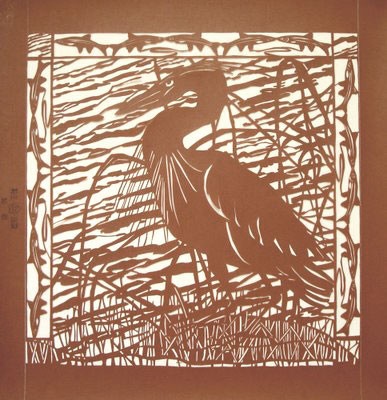What is Katazome?

Katazome, or stencil dyeing, is a Japanese paste-resist surface design technique for cloth and paper. While the process is centuries old, the art was revived in the 20th century by Serizawa Keisuke, an artist of the mingei, or "people's crafts" movement of 1920's and 1930's Japan. The process incorporates elements of both printmaking and painting, and uses simple non-toxic materials such as rice paste resist, natural pigments and soymilk.
Here are the steps I use in my work:
1. Once the design is complete, the stencil is cut from a water-impervious Japanese paper called shibugami, and reinforced with a fine silk mesh.
2. The fabric is then sized with soymilk to prepare it for the paste and the dyes. In addition to preventing the pigments and dyes from wicking, the soy sizing gives the fabric a temporary paper-like feel.
3. Rice paste resist is spread through the stencil. This step is somewhat like screen printing, but rice paste resist (rather than color/ink) is transferred to the cloth. The paste resist dries to a strong yet water-soluble resist, which prevents the dyes from reaching the areas of the cloth as defined by the stencil design.
4. The natural pigments are blended with soymilk, which serves as a binder. The pigment colors come from plant, mineral and other natural sources.
5. The colors are hand-painted on the cloth in three layers (drying completely between each layer). Pasted areas are protected from the dyes and pigments.
6. The fabric is left to air cure for one or two weeks. Air curing causes the soymilk used to carry the pigments to oxidize, creating an insoluble protein polymer, which binds the pigments to the cloth permanently. Finally, the rice paste is soaked off in cold water, revealing the design.